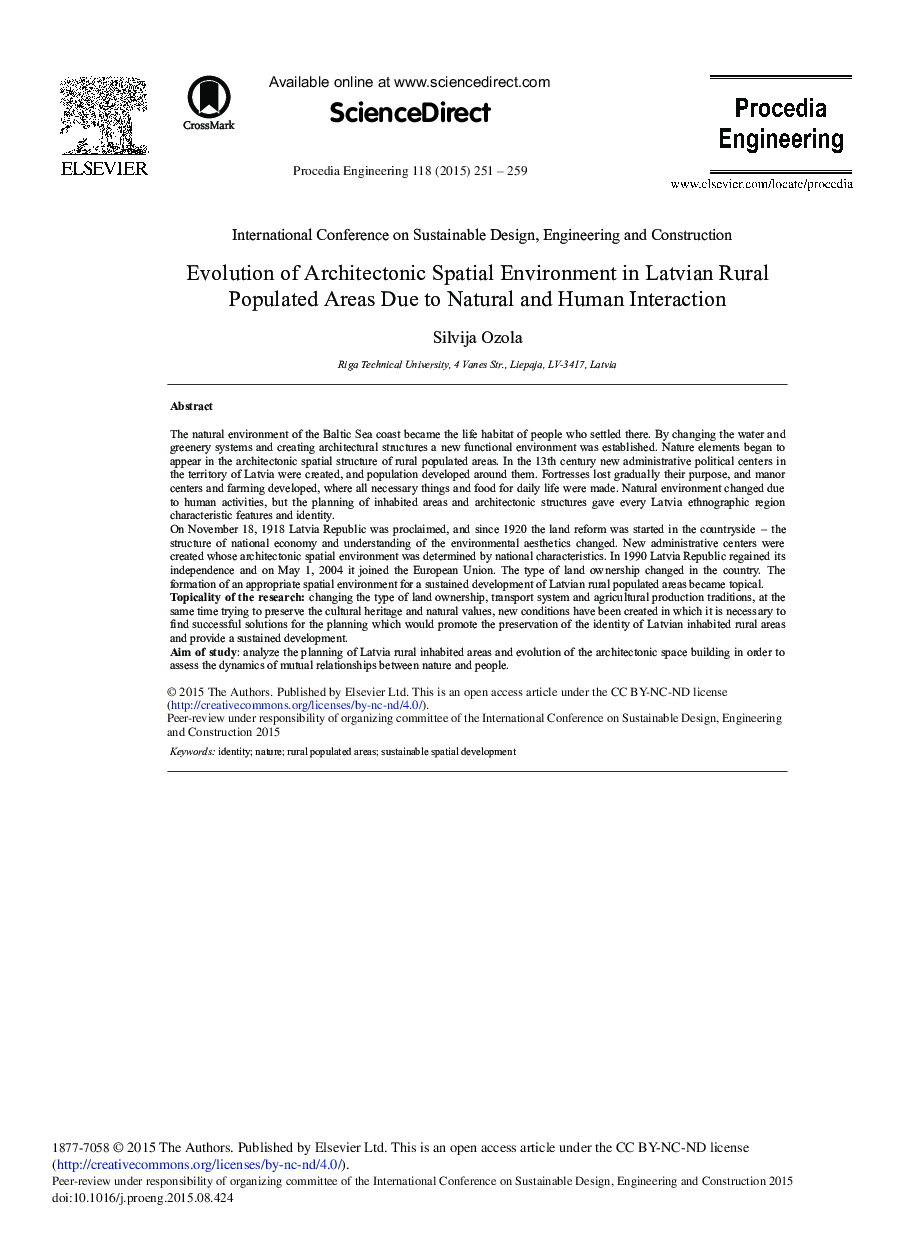| کد مقاله | کد نشریه | سال انتشار | مقاله انگلیسی | نسخه تمام متن |
|---|---|---|---|---|
| 855600 | 1470708 | 2015 | 9 صفحه PDF | دانلود رایگان |
The natural environment of the Baltic Sea coast became the life habitat of people who settled there. By changing the water and greenery systems and creating architectural structures a new functional environment was established. Nature elements began to appear in the architectonic spatial structure of rural populated areas. In the 13th century new administrative political centers in the territory of Latvia were created, and population developed around them. Fortresses lost gradually their purpose, and manor centers and farming developed, where all necessary things and food for daily life were made. Natural environment changed due to human activities, but the planning of inhabited areas and architectonic structures gave every Latvia ethnographic region characteristic features and identity.On November 18, 1918 Latvia Republic was proclaimed, and since 1920 the land reform was started in the countryside – the structure of national economy and understanding of the environmental aesthetics changed. New administrative centers were created whose architectonic spatial environment was determined by national characteristics. In 1990 Latvia Republic regained its independence and on May 1, 2004 it joined the European Union. The type of land ownership changed in the country. The formation of an appropriate spatial environment for a sustained development of Latvian rural populated areas became topical.Topicality of the research: changing the type of land ownership, transport system and agricultural production traditions, at the same time trying to preserve the cultural heritage and natural values, new conditions have been created in which it is necessary to find successful solutions for the planning which would promote the preservation of the identity of Latvian inhabited rural areas and provide a sustained development.Aim of study: analyze the planning of Latvia rural inhabited areas and evolution of the architectonic space building in order to assess the dynamics of mutual relationships between nature and people.
Journal: Procedia Engineering - Volume 118, 2015, Pages 251-259
